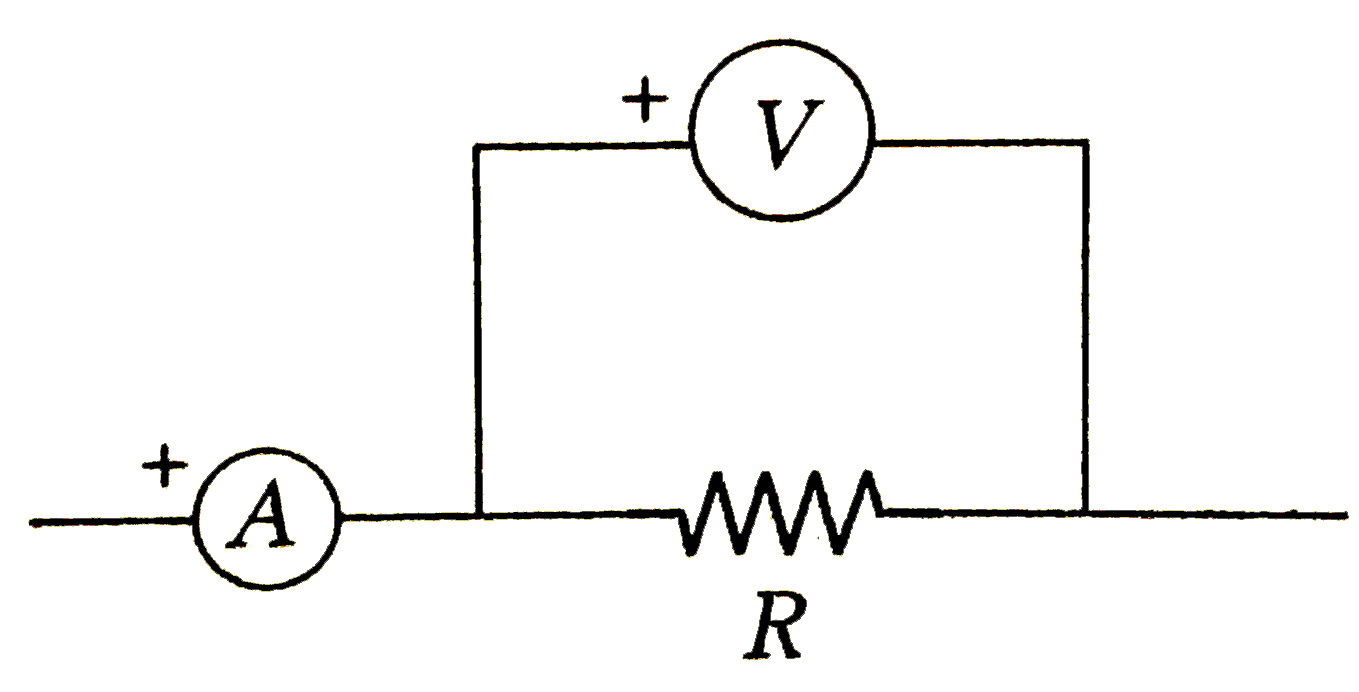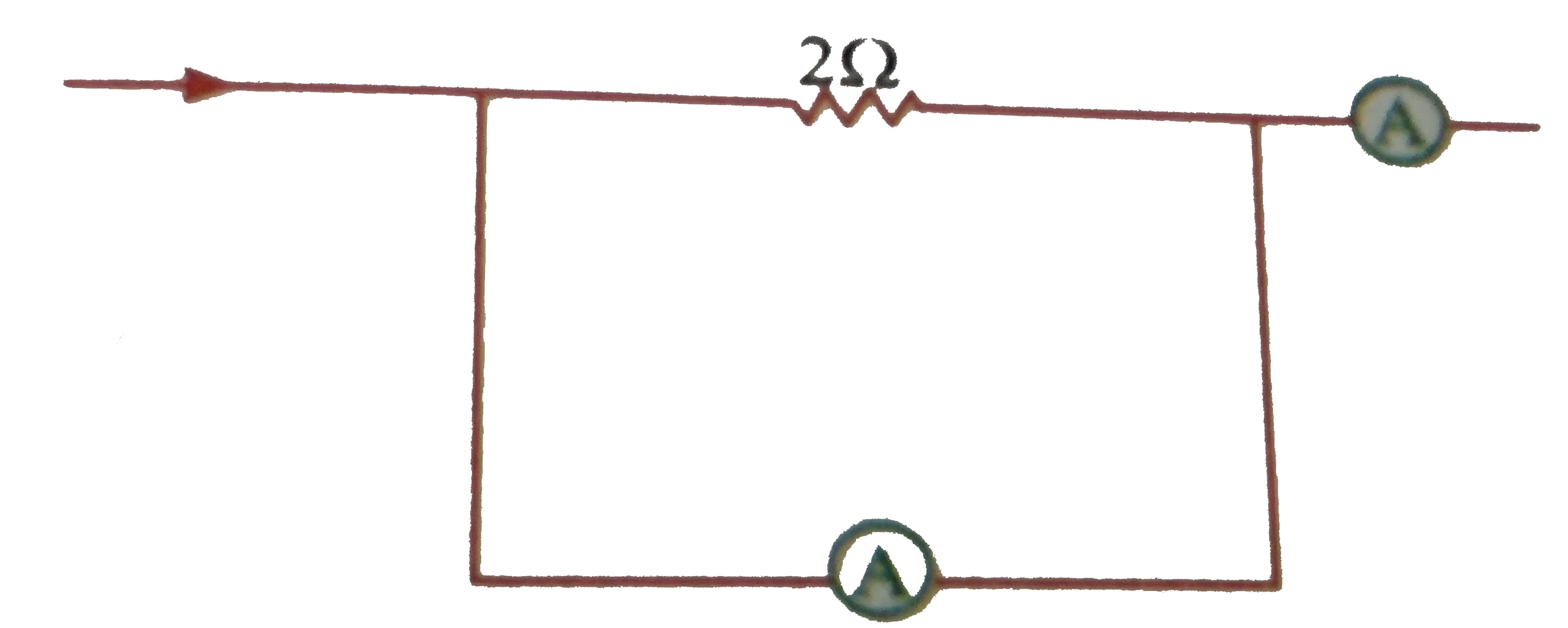A voltmeter and an ammeter are connected in series to an ideal cell of emfE. The voltmeter reading is V, and the ammeter readings is I. Then
(i) V<E (ii) the voltmeter resistance is V/I
(iii) the potential difference across the ammeter is E−V
(iv) Voltmeter resistance + ammeter resistance = E//I
Correct statements are
V<ɛ
The voltmeter resistance is V/I
The potential difference acros the ammeter is (ɛ−V)
Voltmeter resistance plus ammeter resistanc =ɛ/I
The correct Answer is:A, B, C, D
Step by step video, text & image solution for A voltmeter and an ammeter are connected in series to an ideal cell of emf E. The voltmeter reading is V, and the ammeter readings is I. Then (i) V lt E (ii) the voltmeter resistance is V// I (iii) the potential difference across the ammeter is E - V (iv) Voltmeter resistance + ammeter resistance = E//I Correct statements are by Physics experts to help you in doubts & scoring excellent marks in Class 12 exams.
Topper's Solved these Questions
Similar Questions
Knowledge Check
- Question 1 - Select One or More
An ammeter and a voltmeter are connected in series to an ideal battery of emf E. If the ammeter reads I and voltmeter reading V, then
AV<εBthe resistance of voltmeter is V/ICP.D. across the ammeter is E-VDAmmeter and voltmeter have equivalent resistance = E/l - Question 2 - Select One
An ammeter A, a voltmeter V and a resistance R are connected as shown in the figure. If the voltmeter reading is 1.6V and the ammeter reading is 0.4A, then R is
 Aequal to 4ΩBgreater than 4ΩCless than 4ΩDbetween3Omegaand4Omega
Aequal to 4ΩBgreater than 4ΩCless than 4ΩDbetween3Omegaand4Omega - Question 3 - Select One

If the voltmeter reads 0.2 V and the ammeter reads 0.101A, the resistance of the voltmeter is (in ohm)A500B1000C200D400
An ammeter and a voltmeter are connected in series to a battery of emf 6V. When a certain resistance is connected in parallel with the voltmeter, the reading of the latter decreases n = 2 times, whereas the reading of the ammeter increases the same number of times. What is the ratio of the voltmeter resistance to the ammeter resistance? Find the voltmeter reading after the connection.
View SolutionA student connects a voltmeters, ammeter and resistance according to the circuit given. If the voltmeter reading is 20V and ammeter reading is 4A, then the resistance will be
 View Solution
View SolutionAn ammeter, voltmeter and a resistor are connected in series to a cell and the readings are noted as I and V. If another resistor R is connected in parallel with a voltmeter, then
View SolutionA students connects an ammeter A and a voltmeter V to measure a resistancer as shown in figure. If the voltmeter reads 20V and the ammeter reads 4A, then R is
 View Solution
View SolutionA voltmeter and an ammeter are joined, in series to an ideal cell, giving reading V and A respectively. If a resistance equal to the resistance of the ammeter is now joined in parallel to the ammeter then :
View Solution


